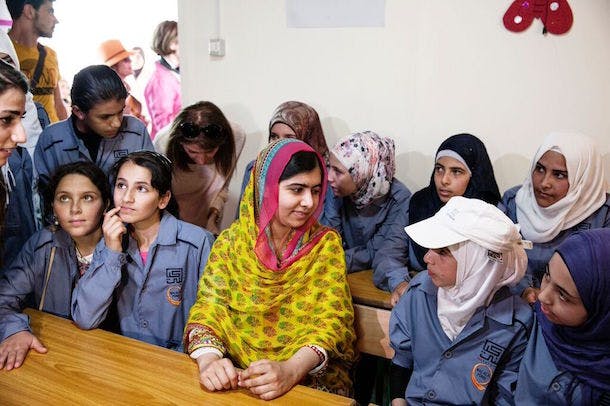
Editor’s Note: This post is part of the blog series, “Her Goals: Our Future,” which highlights the connections between girls and women and the Sustainable Development Goals. Guest blogger views expressed here do not necessarily reflect the views of the UN Foundation.
Goal 4 of the Sustainable Development Goals promises 12 years of education for all children –girl or boy, poor or rich, those living in peace and those in countries affected by conflict. Quality education is key to creating a world where girls and women have the opportunities they deserve to become equal and active citizens.
Recent UNESCO data shows twice as many girls as boys will never start school. Even more, adolescent girls living in countries at war are nearly 90% more likely to be out of secondary school than girls in peaceful nations.
And getting to school is only the beginning. The language of Goal 4 states that everyone deserves not just inclusive education, but equitable quality education. Yet, millions of girls are experiencing education unequally. Many schools around the world lack adequate bathrooms for girls, and few employ female teachers who serve as role models or address learning inequalities.
Free, quality education is a human right. This is a vision shared by millions around the world – and a promise world leaders have already made.
But making a promise to ensure quality education will only get the world so far. The only way to know that this promise of Goal 4 is being kept is if governments regularly report on progress.
Since the goals were adopted, government experts have been tasked with determining how to do just that. They are debating the best way to measure the implementation of Goal 4 through a set of “indicators.” These indicators say what to measure in order to determine whether and how much progress is being made against specific targets. However, there are currently no indicators proposed that measure how many children complete 12 years of education – nor do they measure whether the education is free.
Including these indicators is important so we actually know if girls around the world are getting 12 years of education.
If the proposed indicator framework is adopted, 59 million primary school-aged children and 65 million adolescents who are currently not in school will not be part of the global measurements. Essentially, governments are choosing to make these children invisible. But there is still time to adapt the language in the indicator framework before the UN formally adopts these measures in early June of this year.
With a promise of ensuring equal education for all comes a commitment to prove it.
Governments must measure their results on gender equality in education. Malala Fund is working to make sure governments keep this promise – and count girls who complete 12 full years of free education. Otherwise, we may never know how many millions of girls are still missing out.
As Malala says, “We cannot succeed when half of us are held back.” Therefore, we must count every child – especially girls – when we consider what progress actually means when we work toward achieving Goal 4.
Want to take action around global goals? Join the Malala Fund movement for updates.
By Hannah Orenstein, Digital Manager, Malala Fund
Malala Fund advocates for 12 years of school for all girls, invests in education leaders and programs in communities where girls face the greatest barriers and empowers adolescent girls around the world by putting their voices and views at the center of our work.
Photo credit: Malin Fezehai / HUMAN / Malala Fund.



 View All Blog Posts
View All Blog Posts